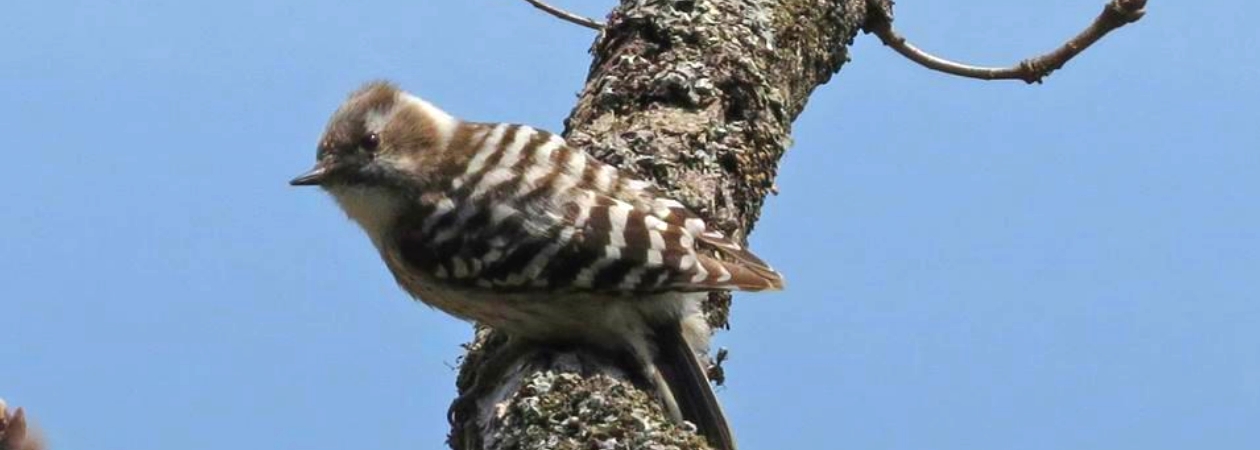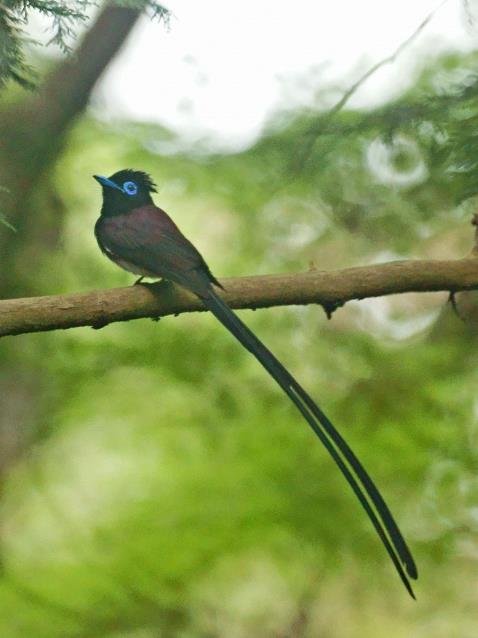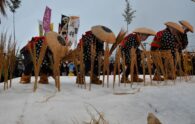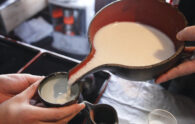Some among you may be buddies of birds. Pelican pals. Rapturous about raptors. Crazy about corvids. Affiliates of our fine feathered friends. Sorry, I’ll stop now. This article is for you. Welcome to the world of bird watching in Japan.
Our first stop is the perfect field guide. My top recommendation out of the uh, several I own is “A Field Guide to the Birds of Japan,” published by the Wild Bird Society of Japan.* This book is out of print but still available second-hand online. Why is it amazing? It’s small and easy to carry, it’s limited to birds found in Japan, and best of all it has both English and Japanese names listed for each bird, and two indexes for Japanese and English names. This last part is super important because it aids communication with Japanese birding friends regarding exactly who is sitting on that branch over there.
What new friends await you in Japan? If, like me, you’re coming from the Americas, most of the birds you meet here will be new with the exception of Osprey, Mallard Ducks, Barn Swallows, Peregrine Falcons, and others including some sea birds who are like “I’ll just fly over this entire ocean, no big deal.” If you’re coming from somewhere else, you should see more familiar faces. For example, those coming from Switzerland should recognize many of our herons and egrets, plus Common Kingfishers, Eurasian Tree Sparrows, Eurasian Widgeons, Northern Pintails, and more.
Here are some of my favorite local birds which should be new to many of you:
“Phasianus versicolor in field” by Alpsdake is licensed under CC BY-SA 3.0
Colorful Japanese Green Pheasant males and plainer females are commonly seen wandering and pecking around in fields and backyards. Learn to recognize the males’ metallic “ken ken!” call, and take a second look if you see something crow-sized in rice paddies and fields: it might actually be a pheasant.
“Syrmaticus soemmerringii” by Alpsdake is licensed under CC BY-SA 3.0
Copper Pheasants, called “yamadori,” or mountain birds, in Japanese, live up to their namesake and hang out in foresty mountainous areas. They are fast. Get those binoculars up quickly or you won’t be sure what you just saw: a Copper Pheasant, or a female Japanese Green Pheasant.
The Japanese Pygmy Woodpecker is a small sparrow-sized woodpecker that loves hanging out in mixed flocks of tits, plus the occasional Goldcrest, or maybe some Japanese White-Eyes. If you hear a raspy “gee!” call, check nearby trees for this little guy pecking at worms. You may be able to get a closer view by “pishing” at it.
“Cettia diphone (crying)” by Alpsdake is licensed under CC BY-SA 3.0
The Japanese Bush Warbler heralds the spring with a resounding “ho-hokekyo.” The call is at least twice as big as this reclusive, tiny, drab bird, which either has the world’s most amazing diaphragm or is hiding speakers in the bushes.
“Terpsiphone atrocaudata” by Pokopong is licensed under CC BY-SA 3.0
The Japanese Paradise Flycatcher is more common further south but there are pairs that come to nest in Iwate. Despite their crazy bright blue eye rings and the male’s splendid long tail, these birds are surprisingly hard to spot as they are mostly black, seem to prefer shadowy areas, and don’t like to stay still. Fortunately, they sound like weird car alarms punctuated by creaking, so you’ll know one when you hear one.
*Note for fanatics: There is a new field guide out by Mark Brazil also called “Birds of Japan (Helm Field Guides).” It just came out and should be available for purchase worldwide by the time this article gets out. I got a look at a copy of it, and think it would also be an excellent choice. It’s compact, fully illustrated, and has the newest names and information. My only caveat is I didn’t see any Japanese bird names listed or in an index. Probably the reasoning is that birders can communicate using the included Latin names instead.
Japanese
日本でのバードウオッチング読者の皆さんの中には、「鳥の友達」がいるかもしれません。いわゆる、猛禽類マニア。野鳥に興味を持っている方向けに、日本でのバードウオッチングをご紹介します!
まずは、おすすめの鳥図鑑。私は何冊か持っていますが、一番お気に入りが「A Field Guide to the Birds of Japan」。もう出版していないですが、インターネットなどで中古品が購入できます。おすすめする理由は、小さくて持参しやすく、日本で見られる野鳥に限定しているので分かりやすいです。さらに、英名・和名両方が載せられ、英名と和名の二つの索引があるので、日本人のバードウオッチング友達とコミュニケーションしやすくなります。
日本では、どんな新しい野鳥友達に会えるのか? 私と同じアメリカ大陸出身の方にとっては、日本で見る鳥は新しい種類がほとんどです。ただし、ミサゴ、マガモ、ハヤブサなど、太平洋を平気で渡る海鳥系が共通します。アメリカ大陸出身の方以外の場合は、見慣れた野鳥がいるでしょう。たとえば、スイス出身者にとっては日本でのサギ類、カワセミ、スズメ、ヒドリガモ、オオナガガモなどは見たことがあるかと思います。
ここで、ほとんど日本でしか見られない、私のお気に入り野鳥を5つご紹介します:
キジ
【写真】
“Phasianus versicolor in field” by Alpsdake is licensed under CC BY-SA 3.0
カラフルなオスと茶褐色のメスは、よく畑や庭でウロウロして地面をつついている姿が見られます。金属的な声が聞こえて、カラスぐらいの大きさである鳥がいたら見てみましょう: それはカラスではなく、キジかもしれません。
ヤマドリ
【写真】
“Syrmaticus soemmerringii” by Alpsdake is licensed under CC BY-SA 3.0
名前の通り山、森にいることが好きです。そして、見つかったら素早く逃げます。双眼鏡を早く目にしないと、見たのはヤマドリなのか、キジのメスなのかが分からなくなってしまうのです。
コゲラ
【写真】
“Japanese Pygmy Woodpecker” by author’s father
スズメぐらいの大きさしかない小型キツツキで、シジュウカラなどのカラ類、メジロ、たまにはキクイタダキなどの集まりと一緒にいるのが好きです。(こういう集まりは、混群、こんぐん、と言います)。にごった声の「ギイー!」が聞こえたら、近くの木で小さいのが昆虫をつついていないかをチェック。
ウグイス
【写真】
“Cettia diphone (crying)” by Alpsdake is licensed under CC BY-SA 3.0
「ホーホケキョ」の鳴き声で春を告げます。小さくて地味な体に対して、派手な大きい声をしています。スピーカーでも使って声をでかくしていないか、と疑うほどです。
サンコウチョウ
【写真】
"Terpsiphone atrocaudata" by Pokopong is licensed under CC BY-SA 3.0
もっと南に行けばもっといるそうですが、岩手県にきて巣を作るつがいもいます。目の周りが鮮やかな青でオスはとんでもなく長い尻尾をしているものの、体が黒い上に暗いところを好みます。なかなかじっとしていないことから意外と見つけづらいのですが、幸い、「車の軋み音」のような、 独特な鳴き声をするので、聞けばすぐ分かります。







-195x124.jpg)
